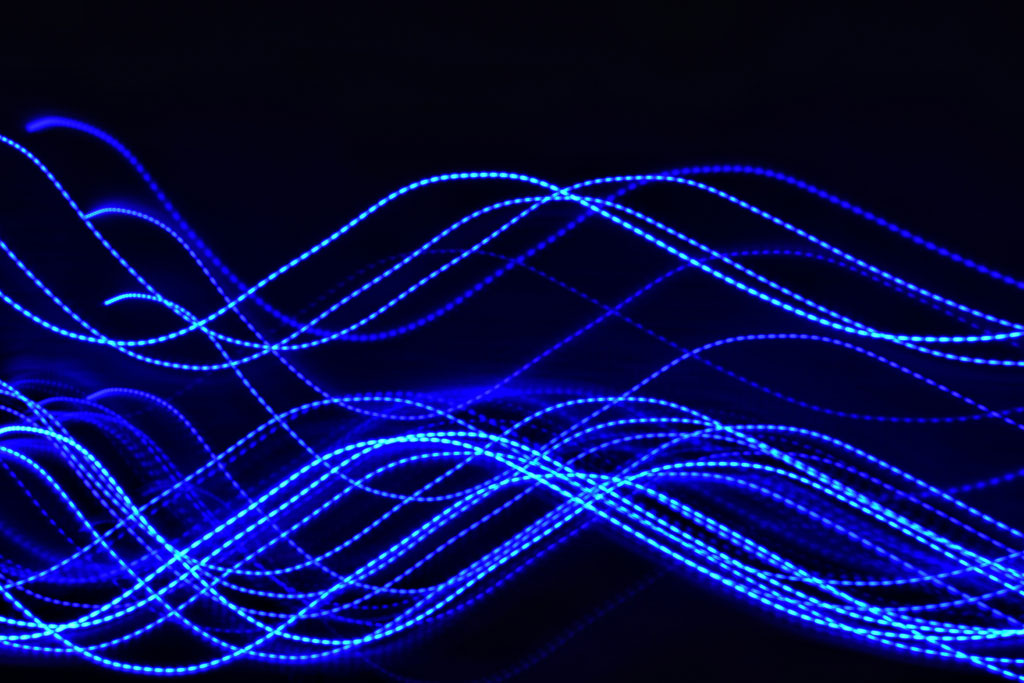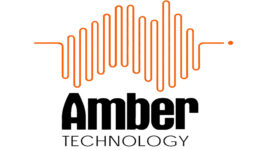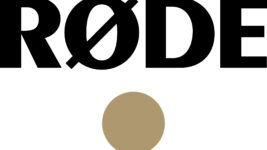LISTEN HERE
3 Jun 2025
MIXING THE LIGHT FANTASTIC

Subscribe to CX E-News
Dad joke No.1: How many audio engineers does it take to change a lightbulb? Answer: Audio engineers don’t change light bulbs… they don’t do lighting. Actually, that’s not true. Mix engineers most definitely do lighting, though often don’t realise it.
Sound and lighting have more in common than some of us would like to admit, and this issue I want to explore the overlap between the two art forms and illustrate how every mix engineer might benefit from this ‘power of sight’ that lighting professionals take for granted.
When it comes to audio mixing, contemplating your sonic palette from the point of view of ‘light and shade,’ ‘bright and dark’ or even colour can provide you with mixing insights beyond what your advanced hearing alone can conjure. Adding this advanced skill to your auditory toolkit – that of being able to ‘visualise’ sound – can sometimes be the difference between a fair mix outcome and a brilliant or inspired one.
Being able to ‘see’ a mix is something many mix engineers (including yours truly) claim to be able to do, but in truth, this so-called vision is more accurately a broad collection of concepts that we thoughtlessly lump together as ‘visualisation’. Not everyone is capable of ‘seeing’ a mix, nor does every mix require that kind of perspective, and just to be clear, no-one is ingesting sound rays with their eyeballs here. It’s not actually about that at all…we’re not literally lighting a stage or a set, although metaphorically at least, we’re coming close. But before I convince you that I’ve lost my mind here, let me explain.
This ‘vision’ takes several forms, and I’ll try to list them here under simple subcategories, so we don’t spiral into the realm of nonsense and clap-trap. I don’t want to come across as a Tarot Reader or Reiki Master. This topic is as important as learning how to use a compressor or place a microphone.
Sound As An Image
Most multitrack audio sessions, particularly those involving songs in particular, can sometimes literally conjure an image in a mix engineer’s head, derived from either the sound of the music, its attitude or even its subject matter (lyrics). It’s a trigger of the imagination brought on by the music. But the triggered vision of the mix engineer is valid nonetheless.
If you’re one of this crazy breed, the most important first step to developing this sense of ‘vision’ is learning to embrace its power and value, by thinking deeply about how it can inform the various tones, sounds, volumes, colours and shades of your mix. Now is certainly not the time to belittle your own vision by dismissing it as B.S. or some form of advanced delusion. It’s not… this is your mind engaging with the music and triggering a unique response that can potentially inform you of how you might treat an individual element, or indeed a whole mix. It can be a direct path to a personalised sonic palette that no textbook can explain, let alone teach. The vision in your head is there for the taking if you want it. Learning how to turn this ‘sight’ into a brilliant mix takes time and patience, but it starts with the first step: acknowledging its validity.
Your triggered vision might, for example, be that of an Australian landscape, conjured by the lyrics, prompting you to make the mix bright and colourful, or dark and menacing… literally. The overall tone might come across as bright, with bold features, or contrastingly dark and brooding, with only one or two dramatic highlights. Bright things might appear super clear and detailed with the background remaining deep and dark by contrast, making the mix ‘look’ cinematic.
Whichever direction you take your mix, if you’re lucky enough to have an image in your head of what your soundstage ‘looks’ like, you have a solid foundation on which to build your sounds, reaffirming the vision in your head. As I’ve said before, we all possess a giant library in our heads of visual spaces we’ve encountered throughout our lifetimes, including what each one of them sounds like. We have a good sense of how the physical world around us sounds, as do most humans, irrespective of whether they’re also audio engineers. When we get good at matching what something sounds like with what something looks like – which film mixers are expert at – our mixes come alive visually, and immediately become more convincing to the listener.
Light As A Tonal Metaphor
But for most people, this vision (or ‘sightedness,’ as my old mate and author, Greg Day, might describe it) doesn’t literally take the form of a visual image of let’s say, a bright and colourful landscape or a dark and menacing ocean (to describe a couple of obvious ones), but rather as a flow of visual metaphors, some conscious, others semi-conscious.
For example, a mix may not look to you like a physical place – or indeed look like anything in particular – but it may nevertheless be heard as one, particularly as your mix advances.
A song may contain a large cohort of sounds, some of which might seem naturally bright and dominant, others dark and brooding and so on, and it’s in developing the skill of being able to describe these elements visually with adjectives like ‘distant and foggy,’ or ‘faint and elusive’ that puts you on the path to visualising your mix rather than simply listening to it.
These visual metaphors can inform you about where a sound might be placed in your mix, its volume and tone, and what might be required in terms of effects to create the illusion of its physical whereabouts in the soundstage. This ‘sightedness’ can make a huge difference in navigating the mix, particularly with things like delays and reverbs. When there’s a physical purpose to how these types of effects might behave rather than merely an arbitrary, or spontaneous one, your mix can sometimes become far more vivid, transparent and deep. I’m convinced that people who drown in a mass of reverb when they mix, or who complain that their reverbs make everything too ‘wet’ and indistinct, generally have little or no capacity to visualise their mixes. Their reverbs thus lack purpose, or logic, and are seen more like the tail of a kite than an occupied space. For these people, developing an ability to visualise a mix is crucially important if they ever hope to improve the quality of their work.
So forget talking to yourself in kilohertz for a while and instead let these sorts of expressions sink into your contemplations while mixing.
Ask yourself: what would ‘distant and foggy’ or ‘faint and elusive’ sound like if you were to ascribe these attributes to a Gretsch second-tier guitar part that was playing chords and occasional riffs in a slow indie-pop ballad.
Would this description infer a curtailed top-end tone, and perhaps a rolled off bottom-end too, be low in the mix, with a dark, long reverb that has no pre-delay… a mid-left panning position with an even darker slap off against the other side of the soundstage? Maybe.
Now would be the time to try that to see if it triggers an image in your head; a sense of where the sound is coming from in physical space. If all these effects do little or nothing to help convince you of the guitar’s physical whereabouts then there’s every chance the effects are only making matters worse by adding chaos and confusion, rather than creating illusion. Conversely, if adding them suddenly allows you to ‘see’ the Gretsch in the space, then you’re definitely onto something.
And how would that then sound with a bright, clear, and detailed main vocal placed proudly in front of it and a pair of wide-panned acoustic guitars 20 metres either side of the vocal. A good start perhaps? Now let’s imagine the whole mix floating in a foggy moonlit landscape? How do we make fog, with nought but sound – no lights or smoke machine? A very long reverb perhaps, with echoes in it… experimentation is the key. Your task tonight: how to make fog with sound…
Lighting a Soundstage In Your Mind
Another form of ‘lighting with sound’ is more literally about creating pools of light, movement, shadows and colour etc with the various elements of your mix.
This might involve placing musical elements literally like a band on a stage, creating separation between them with panning and tone. A drum kit might be made narrower in this context; the overheads panned only 30% left and right rather than 100%. Big guitars might be panned 90% or even 100% left and right and be highlighted with relatively bright tones and dark echoes opposite.
By contrast the bass might be deep and dark, a broody synth pad might be rolled off in the tops, fed into a big, dull reverb that features nothing above 800Hz. The idea of this basic sonic concept is to find a way to create sonic contrast: light against dark, highlights against shadow (to borrow terms from our lighting brethren again), to generating sonic spotlights, as it were, on the featured elements by placing them in a dark context.
It’s like imagining a long exposure on a camera that can produce rich contrast and depth of field, as opposed to flash photography, which generally exposes everything to one crude light source, destroying most of the beautiful contrast in the process.
Finding ways to exaggerate the highlights of your mix with volume, tone and effects, by contextualising these elements with dimly lit, darker elements adds depth and contrast that will produce far superior three-dimensionality in your mixes. After all, your mix elements are not democratic processes whereby every sound should be given equal value – one sound, one vote. Good mixes never do that! Mixing that way – and believe me, lots of people do it – is the equivalent of flash photography, or turning on the house lights. Disastrous.
I could go on for days about this but I’m out of room. If you would like me to expand on this topic next issue, don’t hesitate to drop me a line.
Til then, enjoy your mixing. And look before you leap…
Andy Stewart owns and operates The Mill in the hills of Bass Coast Shire, Victoria, and he’s also the new Editorial Director of Mutech Media. Check it out here: mutech.media or contact Andy directly via: andy@mutech.media.
Subscribe
Published monthly since 1991, our famous AV industry magazine is free for download or pay for print. Subscribers also receive CX News, our free weekly email with the latest industry news and jobs.






